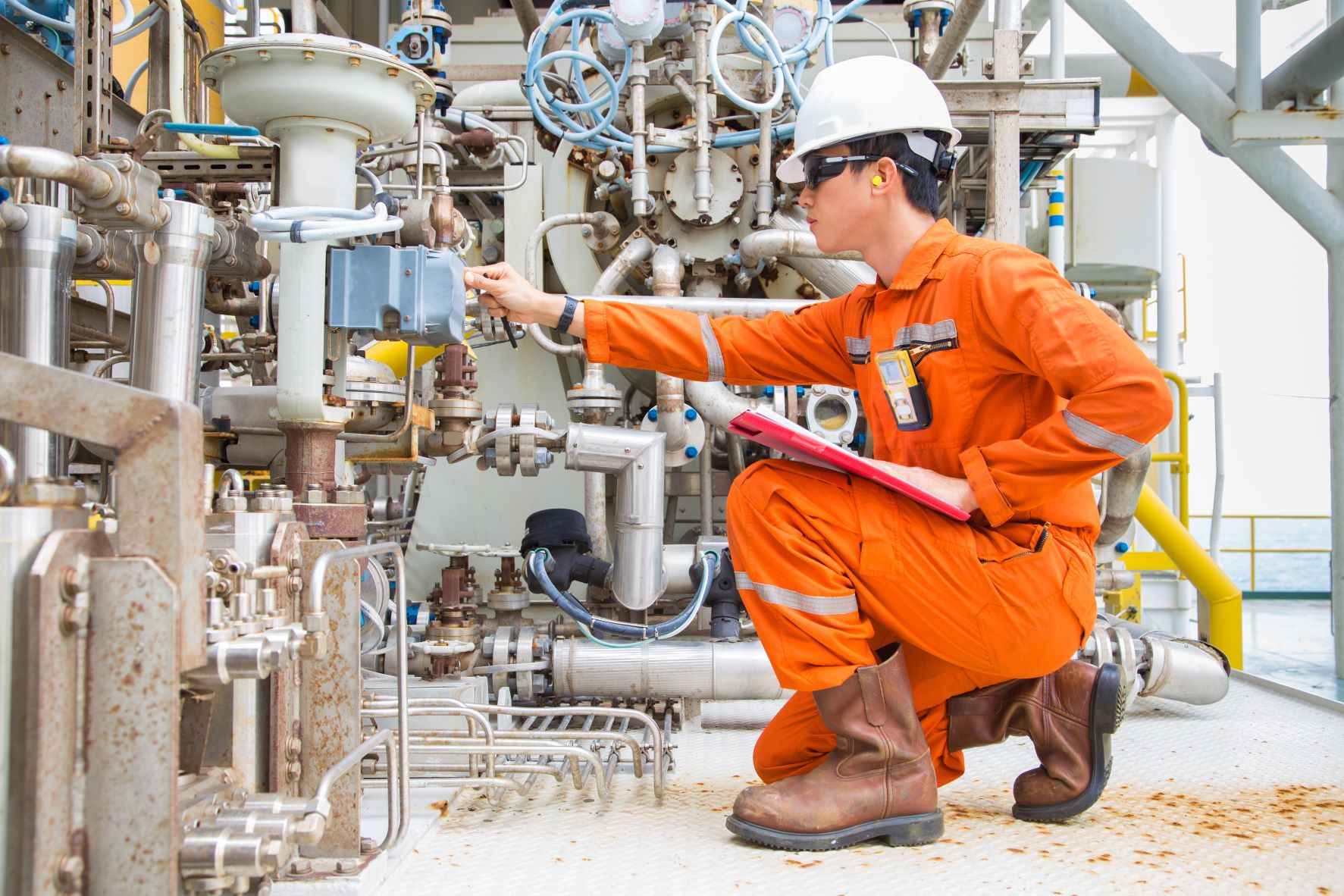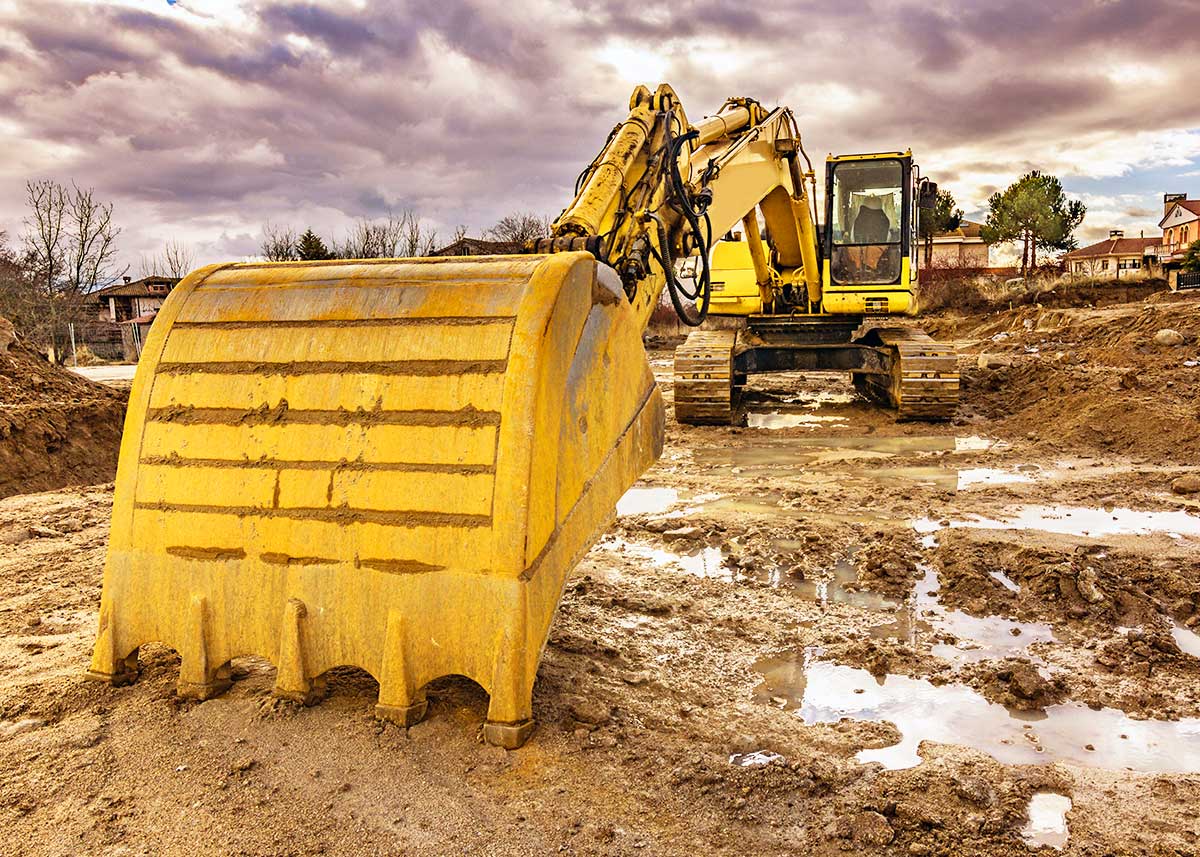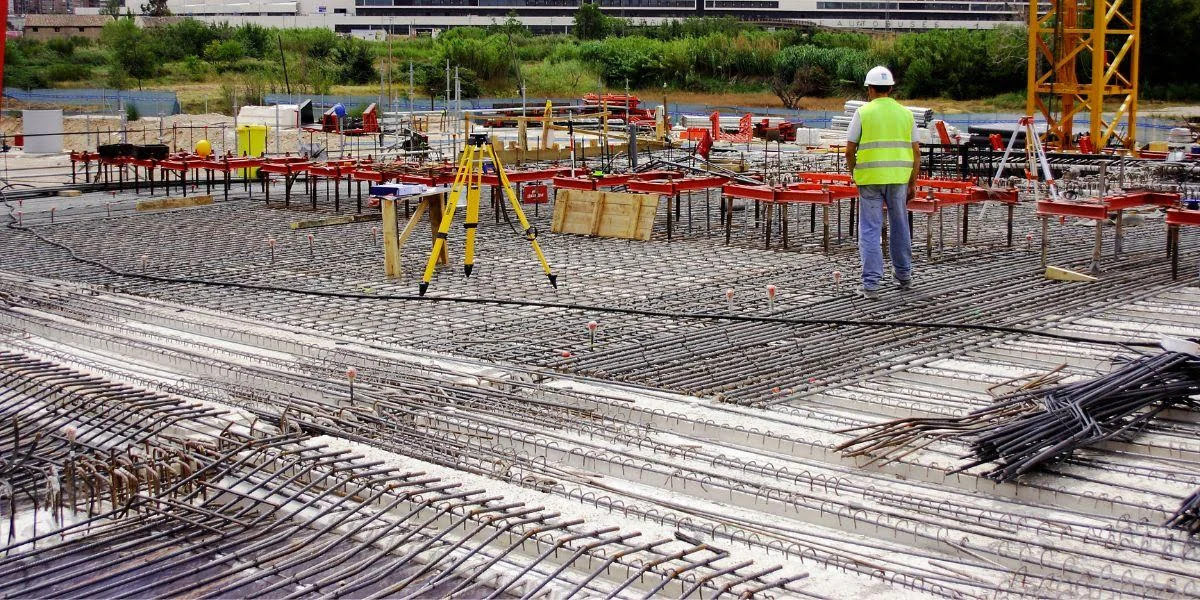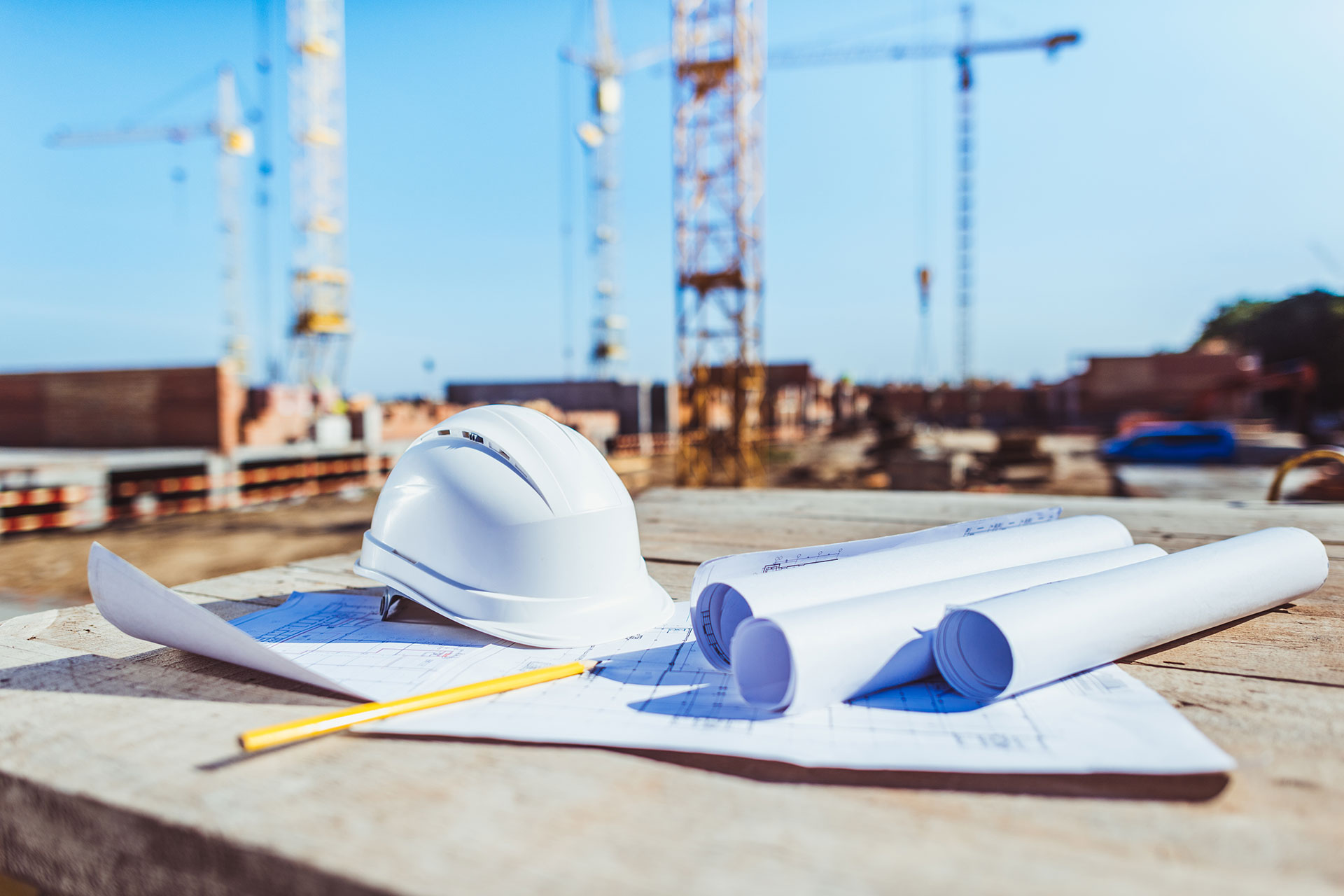Home>diy>Building & Construction>How To Work In Construction


Building & Construction
How To Work In Construction
Modified: October 20, 2024
Learn the essential steps and skills needed to work in building construction. Find out how to start a rewarding career in the construction industry.
(Many of the links in this article redirect to a specific reviewed product. Your purchase of these products through affiliate links helps to generate commission for Storables.com, at no extra cost. Learn more)
Introduction
Welcome to the world of construction! If you have ever aspired to work in a field that is dynamic, challenging, and constantly evolving, then construction might be the perfect industry for you. From building towering skyscrapers to renovating historic structures, the construction sector offers a wide range of opportunities for individuals with the right skills and qualifications.
In this article, we will explore the various aspects of working in construction and provide you with valuable insights on how to embark on a successful career in this industry. Whether you are a seasoned professional looking to switch careers or a fresh graduate eager to enter the workforce, this guide will equip you with the knowledge you need to thrive in the world of construction.
Before we delve into the specifics, it is important to note that the construction industry encompasses a diverse range of trades and sectors. From carpenters and electricians to plumbers and engineers, there are numerous roles and specializations within the field. This article will provide a general overview of the construction industry as a whole, while also highlighting the key skills, qualifications, and steps necessary to succeed in this industry.
So, grab your hard hat and let’s get started on our journey into the fascinating world of construction!
Key Takeaways:
- Construction work demands a blend of essential skills, qualifications, and a proactive mindset. From mastering basic techniques to embracing problem-solving, the industry offers diverse opportunities for career growth and specialization.
- Effective communication, adherence to safety regulations, and continuous learning are pivotal for success in construction. Embracing adaptability and seizing opportunities for advancement can lead to a fulfilling and rewarding career in the dynamic world of construction.
Read more: Why Work In Construction
Necessary Skills and Qualifications
Working in construction requires a combination of essential skills and qualifications to ensure success on the job. While specific roles may have additional requirements, there are several core competencies that are universally important in the construction industry.
First and foremost, construction professionals must have a solid understanding of math and measurement. From estimating materials and calculating dimensions to reading blueprints, mathematical proficiency is crucial to ensure accuracy and precision in construction projects.
Additionally, strong communication skills are vital in the construction field. Construction projects involve collaboration with a diverse team of professionals, including architects, engineers, contractors, and laborers. Effective communication ensures that everyone is on the same page, and that tasks are executed efficiently and safely.
Physical fitness and stamina are also important qualities for construction workers. The job often involves manual labor, including lifting heavy objects, working at heights, and being exposed to adverse weather conditions. Staying in good physical shape and having the endurance to withstand the demands of the job are essential.
To enter the construction industry, there are specific qualifications and certifications that may be required. These can vary depending on the country, state, or even the specific trade you are pursuing. Some common qualifications include a high school diploma or GED equivalent, as well as completing a trade school program or apprenticeship.
For certain trades, such as electricians or plumbers, obtaining a license is mandatory. Licenses typically require passing an exam and meeting specific experience and education requirements. It’s important to research the requirements for your desired trade and ensure that you meet all the necessary qualifications.
Furthermore, construction workers are often required to have a good understanding of safety regulations and procedures. This includes training in how to handle hazardous materials, operate heavy machinery, and comply with Occupational Safety and Health Administration (OSHA) guidelines. Having knowledge of safety protocols not only protects yourself but also your colleagues and ensures a safe working environment.
Lastly, a strong work ethic and attention to detail are qualities that will set you apart in the construction industry. Construction projects have strict deadlines and require meticulous attention to detail to ensure that everything is built to the highest standards. Adhering to schedules, being dependable, and taking pride in your work are essential traits for success in construction.
By possessing the necessary skills and qualifications, you will be well-prepared to embark on a fulfilling and rewarding career in the construction industry.
Finding Employment in Construction
When it comes to finding employment in the construction industry, there are various avenues you can explore to secure a job. Here are some tips to help you navigate the process and increase your chances of success:
1. Networking: Building a strong professional network is crucial in the construction industry. Attend industry events, join trade organizations, and connect with professionals in the field. By networking, you can learn about job opportunities, gain valuable insights, and potentially secure referrals.
2. Online Job Boards: Utilize online job boards and construction-specific websites to search for job openings. Websites like Indeed, CareerBuilder, and LinkedIn often have a wide range of construction-related positions listed. Make sure to tailor your resume and cover letter to highlight your relevant skills and experiences.
3. Construction Companies: Reach out directly to construction companies in your area. Many companies may not advertise job openings, but they could have positions available. By contacting them directly, you can express your interest, showcase your qualifications, and potentially secure an interview.
4. Apprenticeships and Trade Programs: Consider enrolling in apprenticeship programs or trade schools that offer hands-on training. These programs often have partnerships with construction companies and can provide valuable opportunities for employment or connections within the industry.
5. Local Unions: Check if there are any construction unions in your area. Unions often have job boards and resources for their members, making it easier to find employment opportunities. Joining a union can also offer additional benefits such as better job security, training programs, and access to higher-paying jobs.
6. Construction Job Fairs: Attend job fairs specifically tailored to the construction industry. These events bring together job seekers and employers, providing an opportunity to showcase your skills and make a strong impression on potential employers.
7. Online Presence: Establishing a strong online presence can increase your visibility to potential employers. Create a LinkedIn profile and showcase your construction experience, skills, and accomplishments. Additionally, consider creating a professional website or portfolio showcasing your work and projects.
Remember, finding employment in the construction industry may require persistence and patience. Keep honing your skills, expanding your network, and staying updated on industry trends. With determination and a proactive approach, you will increase your chances of finding the right construction job that aligns with your skills and career goals.
Understanding Different Construction Trades
The construction industry is comprised of various trades, each with its own specialized skills and job responsibilities. It’s important to have a basic understanding of the different trades to explore the options available and choose the path that aligns with your interests and aptitudes. Here are some of the main construction trades:
1. Carpentry: Carpenters work with wood, constructing and repairing structures such as walls, floors, and roofs. They often use hand and power tools to measure, cut, and shape wood materials to precise specifications.
2. Plumbing: Plumbers install and repair the water, drainage, and gas systems in buildings. They work with pipes, fixtures, and valves to ensure the proper flow and distribution of water and gas throughout the structure.
3. Electrical: Electricians are responsible for installing, maintaining, and repairing electrical systems in buildings. They work with wiring, switches, outlets, and fixtures to ensure proper electrical flow and safety.
4. Masonry: Masons work with bricks, concrete blocks, and other materials to construct walls, foundations, and structures. They use mortar and specialized tools to lay and bond the materials together.
5. HVAC (Heating, Ventilation, and Air Conditioning): HVAC technicians install and maintain heating, cooling, and ventilation systems in buildings. They ensure proper functioning of heating and cooling units, ductwork, and ventilation systems to maintain comfortable indoor environments.
6. Roofing: Roofers specialize in installing and repairing roofs. They work with various materials such as shingles, tiles, and metal to create a waterproof and durable roof structure.
7. Painting: Painters apply paint and other finishes to surfaces to protect and enhance the appearance of buildings. They prepare surfaces, apply primers, and use brushes, rollers, or spray equipment to achieve a smooth and even coat of paint.
These are just a few examples of the many trades within the construction industry. Each trade requires specific skills, knowledge, and training. It’s important to research and understand the requirements and responsibilities of each trade to make an informed decision about the path you want to pursue.
Many individuals start their careers in one trade and may transition to others as they gain more experience and develop new skills. Exploring different trades and acquiring cross-disciplinary knowledge can open up more opportunities for career growth and advancement within the construction industry.
By understanding the different construction trades, you can choose a path that aligns with your interests, strengths, and long-term career goals.
On-the-Job Training and Apprenticeships
On-the-job training and apprenticeships are valuable pathways to enter the construction industry and gain hands-on experience. These programs provide individuals with the opportunity to learn the practical skills and knowledge necessary to succeed in their chosen trade. Here’s what you should know about on-the-job training and apprenticeships:
1. On-the-Job Training: On-the-job training (OJT) is a common method of learning in the construction industry. It involves working under the supervision of experienced professionals who provide guidance and instruction. OJT allows individuals to learn on the job, gaining practical skills and knowledge through real-world application.
During on-the-job training, you will learn the specific skills and techniques required for your chosen trade. This could involve tasks such as operating equipment, using tools, reading blueprints, and following safety protocols. On-the-job training can vary in duration depending on the trade and the complexity of the skills being taught.
2. Apprenticeships: Apprenticeships are formal training programs that combine on-the-job training with classroom instruction. Apprenticeships provide a structured learning experience, allowing individuals to develop a deep understanding of their trade. Apprentices work alongside experienced professionals while also attending classes to learn theoretical concepts.
Apprenticeships typically last for several years, during which apprentices progressively gain more responsibilities and knowledge. They receive hands-on training and practical experience while also studying subjects such as construction principles, building codes, and safety regulations. Apprenticeships often culminate in a certification or journeyman status, where individuals are recognized as skilled professionals in their chosen trade.
Apprenticeships offer several advantages, including earning a wage while learning, gaining valuable industry connections, and receiving a recognized qualification at the end of the program. They also provide a structured career pathway, with opportunities for advancement and specialization.
To enter an apprenticeship program, you may need to meet certain requirements, such as having a high school diploma or GED equivalent. Some trade unions or organizations offer apprenticeships, while others are sponsored by employers or industry associations. Research and reach out to the relevant organizations to learn about available apprenticeship opportunities in your area.
Both on-the-job training and apprenticeships offer invaluable learning experiences in the construction industry. They provide practical skills, a solid foundation of knowledge, and the opportunity to work alongside experienced professionals. Whether you choose on-the-job training or an apprenticeship, these pathways can pave the way for a successful career in construction.
Read more: How Does Retention Work In Construction
Workplace Safety and Regulations
Safety is paramount in the construction industry. Construction sites can be hazardous, and it is essential for all workers to adhere to strict safety regulations to protect themselves and others. Understanding workplace safety measures and regulations is crucial for anyone working in construction. Here are some key aspects to be aware of:
1. Occupational Safety and Health Administration (OSHA): The Occupational Safety and Health Administration is a regulatory body that enforces safety standards in the workplace. OSHA sets guidelines and regulations to promote safe working conditions, mitigate hazards, and protect workers from injuries or illnesses on construction sites.
It is important to familiarize yourself with OSHA guidelines and regulations relevant to your job. These may include requirements for personal protective equipment (PPE), fall protection, electrical safety, hazard communication, and more. Staying updated on OSHA regulations and actively implementing them on the job site is crucial for maintaining a safe working environment.
2. Safety Training and Certifications: Many construction companies require employees to undergo safety training and hold specific certifications. These trainings can cover topics such as proper equipment usage, hazard identification, emergency procedures, and first aid. Obtaining certifications such as OSHA 10 or OSHA 30 is often beneficial and can enhance your employability and job safety.
3. Hazard Identification and Prevention: Construction sites can present various hazards, including falls from heights, electrical accidents, exposure to hazardous materials, and more. It is important to conduct thorough hazard assessments and implement preventive measures to mitigate risks.
Regular inspections, safety briefings, and the use of proper protective equipment are vital in preventing accidents and injuries. Maintaining a clean and organized work environment and promptly addressing potential hazards can contribute to a safer construction site.
4. Emergency Preparedness: Being prepared for emergencies is essential in the construction industry. This includes having clear evacuation plans, knowing the location of emergency exits, and conducting regular drills to ensure everyone is aware of proper procedures in the event of accidents, fires, or other emergencies.
Additionally, having designated first aid responders trained in CPR, first aid, and other life-saving techniques is crucial. Adequate communication systems and access to medical assistance should be readily available on construction sites.
5. Reporting and Investigating Incidents: It is important to have a process in place for reporting and investigating incidents or near misses. Encouraging employees to report any safety concerns or accidents promptly creates a culture of safety awareness and helps identify areas for improvement.
By prioritizing workplace safety and complying with regulations, construction workers can reduce the risk of accidents and injuries. Safety should be ingrained in every aspect of construction work, from pre-planning and hazard identification to ongoing training and continuous improvement.
Remember, the safety and well-being of yourself, your teammates, and all individuals on a construction site should always be the top priority.
Tools and Equipment Used in Construction
Construction work involves the use of a wide range of tools and equipment to complete various tasks efficiently and effectively. Depending on the specific trade and project, different tools are required. Here are some essential tools and equipment commonly used in the construction industry:
1. Hand Tools: Hand tools are the basics of any construction project. These include hammers, screwdrivers, wrenches, pliers, levels, tape measures, and utility knives. Hand tools are used for tasks such as measuring, cutting, fastening, and general repairs.
2. Power Tools: Power tools are essential for speeding up work and performing more complex tasks. Common power tools used in construction include drills, saws, nail guns, sanders, grinders, and routers. These tools are electric, battery-operated, or pneumatic and enable workers to cut, shape, fasten, and finish materials more efficiently.
3. Heavy Machinery: Construction sites often require the use of heavy machinery to accomplish tasks efficiently. Examples of heavy machinery include excavators, bulldozers, cranes, loaders, and forklifts. These machines are used for digging, moving heavy materials, lifting objects, and grading surfaces.
4. Scaffolding and Ladders: Scaffolding provides temporary work platforms at various heights on construction sites. It allows workers to access higher areas safely for tasks such as painting, plastering, or installing structures. Ladders are also commonly used for smaller-scale tasks or when only a temporary elevation is required.
5. Concrete and Masonry Tools: Construction projects often involve working with concrete and masonry materials. Tools such as concrete mixers, trowels, floats, and screeds are used to mix, pour, level, and finish concrete surfaces. Masonry tools, including trowels, chisels, and bricklaying tools, are used for laying bricks, blocks, and other masonry materials.
6. Surveying and Measuring Tools: Surveying and measuring tools are used for precise measurements and accurate layout during construction. These tools include laser levels, surveying equipment, transit levels, and measuring tapes. They ensure that structures are built according to architectural and engineering plans.
7. Safety Equipment: Safety equipment is crucial on construction sites to protect workers from potential hazards. This may include hard hats, safety goggles, gloves, reflective vests, safety harnesses, and respiratory protection. Personal protective equipment (PPE) should be worn as per regulations and to prevent injuries.
It’s important to use tools and equipment correctly and follow proper safety protocols when operating machinery. Regular maintenance and inspections of tools and equipment are necessary to ensure they are in good working condition and safe to use.
Keep in mind that the specific tools and equipment needed will vary depending on the type of construction project and the trade involved. As a construction professional, it is essential to be familiar with the appropriate tools and equipment for your specific job and ensure their proper usage to complete projects safely and efficiently.
Always wear appropriate safety gear, including a hard hat, gloves, and steel-toed boots. This will help protect you from potential hazards on the construction site.
Basic Construction Techniques
Construction projects involve a combination of skills and techniques to ensure that structures are built safely and to the required specifications. Here are some basic construction techniques that are commonly used in the industry:
1. Site Preparation: Before construction can begin, the site needs to be properly prepared. This involves clearing vegetation, leveling the ground, and ensuring proper drainage to create a stable foundation for construction.
2. Foundation Construction: The foundation serves as the base for any structure. The construction of a solid foundation involves excavating trenches, pouring concrete, and installing reinforcements to ensure stability and durability.
3. Framing: Framing is the process of constructing the skeletal structure of a building. It usually involves the use of wood or metal studs to create walls, floors, and roofs. Framing provides the framework upon which the rest of the structure will be built.
4. Roofing: Roofing techniques vary depending on the type of roof being installed. Common roofing methods include using shingles, tiles, or metal sheets to create a protective layer that prevents water infiltration and provides insulation.
5. Plumbing and Electrical Installation: Plumbing and electrical systems are essential components of any structure. Plumbing involves installing pipes, fixtures, and drainage systems to ensure the proper flow of water. Similarly, electrical installation involves wiring, switches, outlets, and lighting fixtures to provide power throughout the building.
6. Insulation and Drywall: Insulation is installed to improve energy efficiency, acoustic insulation, and comfort within the structure. Drywall is then installed to create walls, ceilings, and partitions. Proper installation ensures a smooth and finished appearance.
7. Flooring: Flooring materials such as tiles, hardwood, carpet, or vinyl are installed to create a finished surface. The technique used depends on the specific flooring material being installed, with considerations for stability, durability, and aesthetics.
8. Finishing: The finishing stage involves the installation of final touches to complete the construction project. This includes painting, applying wall coverings, installing fixtures, and adding trim work to create a polished and visually appealing appearance.
Throughout the construction process, it is important to adhere to safety regulations, follow blueprints and design plans, and regularly inspect the work for quality control. Effective project management, coordination, and communication between different trades and professionals are also crucial for successful construction projects.
Remember, these basic construction techniques provide a foundation for more complex projects. As you gain experience and expertise, you will become proficient in advanced techniques in your specific trade or specialization within the construction industry.
Reading Blueprints and Plans
Blueprints and plans are essential tools used in the construction industry to communicate design details and specifications. Reading and understanding these documents is a crucial skill for construction professionals. Here are some important points to know about reading blueprints and plans:
1. Understanding Symbols and Abbreviations: Blueprints and plans use specific symbols and abbreviations to represent various elements and features. Familiarize yourself with commonly used symbols such as walls, doors, windows, and electrical outlets. Additionally, learn the meaning of abbreviations like HVAC (Heating, Ventilation, and Air Conditioning), MEP (Mechanical, Electrical, and Plumbing), and structural markings.
2. Scale and Measurements: Blueprints are typically drawn to a specific scale to represent real-world measurements. Understand the scale indicated on the blueprint (e.g., 1/4″ = 1 foot) to accurately interpret dimensions and distances between elements. Use a scale ruler or measuring tape to convert the scaled dimensions to actual sizes during construction.
3. Floor Plans: Floor plans depict the layout of each floor of a building. They show placements of walls, doors, windows, and major fixtures. Pay attention to room labels, dimensions, and indications of structural features (e.g., columns or beams). By understanding the floor plan, you can visualize how spaces are connected and identify potential challenges or opportunities.
4. Elevation Drawings: Elevation drawings provide a vertical view of the building’s exterior and interior surfaces. These drawings show the height, shape, and aesthetic details of the structure, helping visualize how it will appear from different viewpoints. Elevation drawings are essential for understanding architectural features, façade treatments, and exterior finishes.
5. Sectional Drawings: Sectional drawings cut the building vertically or horizontally, revealing the internal structure and details. This allows construction professionals to understand how different components fit together and how to construct them accurately. Sectional drawings are particularly useful for visualizing complex elements such as stairs, roofs, and structural systems.
6. Details and Specifications: Blueprints often include detailed drawings and specifications that provide additional information about materials, finishes, and construction techniques. These details help ensure that specific requirements are met, such as the type of insulation, the installation of fixtures, or the placement of electrical outlets.
7. Coordination with Other Trades: Understand how different elements from various trades interact with each other. For instance, coordinate plumbing and electrical layouts with the floor plan to avoid conflicts or design issues. Recognize how the architectural components align with the structural elements to ensure proper integration.
Reading blueprints and plans requires attention to detail, critical thinking, and the ability to visualize three-dimensional spaces from two-dimensional drawings. It is essential to continuously improve your skills in blueprint reading and stay updated on industry standards and best practices.
Remember, careful interpretation of blueprints and plans contributes to accurate construction, minimizes errors, and ensures that the final structure matches the intended design.
Read more: What Is Punch Work In Construction
Communication and Collaboration on Construction Sites
Effective communication and collaboration are vital for the success of construction projects. Construction sites are dynamic and complex environments that require coordination among various stakeholders. Here are key points to consider regarding communication and collaboration on construction sites:
1. Team Communication: Clear and consistent communication among team members is essential. Daily meetings, toolbox talks, and progress updates help ensure that everyone is on the same page regarding project objectives, timelines, and tasks. Utilize digital communication tools, such as project management software or mobile apps, to facilitate real-time communication and streamline information sharing.
2. Coordination Between Trades: Construction projects involve multiple trades working together. Coordination among different trades, such as electricians, plumbers, and carpenters, is crucial to ensure smooth workflows and prevent conflicts or delays. Regular meetings and collaborative planning sessions can help address interdependencies and potential areas of overlap.
3. Architect and Engineer Collaboration: Effective collaboration between architects, engineers, and construction professionals is crucial for successful project execution. Regular communication and coordination ensure that design intent is translated into construction processes accurately. Construction professionals can provide invaluable insights and feedback to architects and engineers, contributing to the efficiency and practicality of the design.
4. Client Communication: Maintaining open lines of communication with clients is essential for project success. Regular updates, progress reports, and addressing any concerns promptly help foster trust and ensure client satisfaction. Clear communication regarding project timelines, budgetary considerations, and design updates helps manage client expectations and prevents misunderstandings.
5. Documentation and Reporting: Accurate documentation is crucial throughout the construction process. Daily logs, change orders, and inspection reports provide a historical record and help identify and address issues promptly. Consistent reporting streamlines communication, ensures accountability, and facilitates project monitoring and decision-making.
6. Conflict Resolution: Construction projects may encounter conflicts or disagreements. Effective communication skills are necessary to resolve issues amicably and reach mutually beneficial solutions. Active listening, empathy, and a collaborative approach can help diffuse tensions and maintain positive working relationships.
7. Safety Communication: Safety is paramount on construction sites. Clear communication of safety protocols, hazard identification, and emergency procedures is vital for maintaining a safe working environment. Regular safety meetings, training sessions, and clear visual communication through signage and safety boards help promote a culture of safety among all workers.
Strong communication and collaboration skills minimize errors, enhance productivity, and foster a positive work environment on construction sites. By promoting effective communication and building relationships based on trust and respect, construction teams can work together harmoniously and achieve project success.
Problem-Solving and Adaptability in Construction Work
Problem-solving and adaptability are essential skills for construction professionals. Construction projects often present challenges and unforeseen circumstances that require quick thinking and the ability to adjust plans. Here are key points to understand about problem-solving and adaptability in construction work:
1. Identifying Issues: Construction projects can encounter various issues, such as design changes, material shortages, weather delays, or unforeseen site conditions. The ability to identify potential problems early on is crucial. Construction professionals must proactively assess risks, identify potential obstacles, and anticipate issues that may arise during the project lifecycle.
2. Analyzing and Evaluating Options: When challenges arise, construction professionals need to analyze the situation and evaluate possible solutions. This involves considering factors such as time, cost, feasibility, and impact on the project. It may be necessary to consult with team members, subcontractors, or experts to gather information and make informed decisions.
3. Creative Problem-Solving: Construction projects often require creative problem-solving skills. This involves thinking outside the box to find innovative approaches or alternative solutions to overcome obstacles. It may involve adapting existing processes, utilizing different techniques, or implementing new technologies to address challenges efficiently and effectively.
4. Collaboration and Communication: Problem-solving often benefits from collaborative efforts. Construction professionals should communicate openly and collaborate with team members, architects, engineers, and clients to find the best solutions. Sharing knowledge, ideas, and expertise can lead to more comprehensive problem-solving and foster a culture of continuous improvement.
5. Adaptability to Changing Conditions: Construction projects are subject to change. Adapting to evolving circumstances and adjusting plans accordingly is crucial. Whether it’s accommodating design modifications, altering construction methods, or adjusting schedules due to unforeseen factors, construction professionals need to be flexible and embrace change to keep projects on track.
6. Risk Assessment and Mitigation: Construction professionals must be proactive in identifying potential risks and taking measures to mitigate them. This involves evaluating the potential impact of risks and implementing strategies to minimize their effects. This may include implementing safety measures, developing contingency plans, or adjusting project schedules to account for potential disruptions.
7. Learning and Continuous Improvement: Construction professionals should embrace a mindset of lifelong learning and continuous improvement. Staying updated on industry trends, new technologies, and best practices enhances problem-solving and adaptability. Seeking out training opportunities and staying informed about advancements in construction methodologies and materials can contribute to professional growth and innovation.
Problem-solving and adaptability are valuable skills that contribute to successful construction projects. By approaching challenges with a solutions-oriented mindset and remaining flexible in the face of change, construction professionals can navigate obstacles effectively and deliver high-quality results. Embracing a culture of problem-solving and adaptability fosters innovation, improves project outcomes, and enhances the overall construction experience.
Career Advancement and Specializations in Construction
The construction industry offers numerous opportunities for career advancement and specialization. As you gain experience and expertise in the field, you can take your career to new heights by exploring different paths and expanding your skill set. Here are some key points to consider for career advancement and specializations in construction:
1. Supervisory and Management Roles: Moving into supervisory or management roles allows you to take on greater responsibilities and oversee larger projects. As a construction supervisor or project manager, you will be responsible for coordinating teams, managing budgets, ensuring project timelines are met, and maintaining quality control. Leadership skills, strong communication abilities, and a solid understanding of the construction process are essential for success in these positions.
2. Specialized Trades: As you gain experience in a specific trade, you can further specialize within that field. For example, a carpenter can become a finish carpenter, focusing on intricate woodwork or cabinetry. Electricians or plumbers can specialize in commercial or industrial projects. By refining your skills and expertise in a specialized trade, you can become a sought-after professional in your area of expertise.
3. Design and Engineering: If you have a passion for architectural design or engineering, you can transition into roles that involve the design and planning stages of construction projects. Pursuing further education in architecture, civil engineering, or construction management can open doors to positions such as architectural designer, structural engineer, or construction estimator.
4. Sustainability and Green Building: With the growing focus on sustainability and eco-friendly practices, specializing in green building techniques and certifications can be a rewarding career path. Consider obtaining LEED (Leadership in Energy and Environmental Design) certification or becoming a sustainable building specialist to contribute to environmentally friendly construction practices.
5. Construction Technology and BIM: Embracing construction technology and building information modeling (BIM) can enhance your career prospects. By becoming skilled in digital tools and software used in construction, you can step into roles related to virtual design and construction coordination, project simulation, or technology implementation on construction sites.
6. Education and Training: Sharing your knowledge and expertise by transitioning into a role in education and training is another avenue for career advancement. You can become an instructor at a vocational school or join training organizations to teach aspiring construction professionals. This allows you to contribute to the industry by shaping the next generation of construction workers.
7. Entrepreneurship and Business Ownership: As you gain experience and develop a network of contacts in the construction industry, you may consider starting your own construction business. Entrepreneurship offers the opportunity to take control of your career, pursue your passion, and potentially build a thriving enterprise.
Career advancement in the construction industry requires continuous learning, professional development, and staying abreast of the latest industry trends. Networking, attending industry events, and seeking out mentorship opportunities can also boost your career prospects.
Remember, your career advancement and specialization choices should align with your interests, skills, and long-term goals. By being proactive, seeking new challenges, and expanding your knowledge, you can forge a successful and fulfilling career in the construction industry.
Conclusion
The construction industry offers a world of opportunities for individuals with the right skills, qualifications, and mindset. Whether you are just starting your career or looking to advance in the field, there are several key takeaways to keep in mind.
First and foremost, construction work requires a combination of essential skills, such as math, communication, physical fitness, and problem-solving abilities. These skills, coupled with the necessary qualifications, form the foundation for success in the industry.
Finding employment in construction can be achieved through various avenues, including networking, online job boards, direct contact with construction companies, apprenticeships, and trade programs. Utilize these resources to explore different trades and identify the opportunities that align with your interests and goals.
Understanding different construction trades is crucial as it allows you to choose a specialization that suits your skills and preferences. By exploring trades such as carpentry, plumbing, electrical work, or masonry, you can embark on a path that matches your passion and expertise.
On-the-job training and apprenticeships are valuable pathways to gain hands-on experience and further develop your skills. These programs provide opportunities for learning, mentorship, and often lead to recognized certifications or journeyman status.
Workplace safety and adherence to regulations should always be a top priority. Familiarize yourself with safety guidelines, obtain the necessary training and certifications, and actively promote a culture of safety on construction sites.
Construction work relies heavily on the use of tools and equipment, ranging from hand tools to heavy machinery. Familiarize yourself with the tools and equipment specific to your trade, and ensure their proper usage and maintenance.
Basic construction techniques, such as site preparation, framing, roofing, and finishing, lay the groundwork for successful construction projects. Develop a solid understanding of these techniques and continue to learn and improve as you gain more experience.
Reading blueprints and plans is a critical skill for construction professionals. Take the time to understand symbols, scales, and different types of plans to ensure accurate interpretation and execution of designs.
Communication and collaboration are essential for construction projects to run smoothly. Effective communication within teams, between trades, with clients, and with architects and engineers facilitates project progress and success.
Problem-solving skills and adaptability are valuable assets in construction work. Encountering challenges and being able to assess, analyze, and find innovative solutions contribute to successful project outcomes.
Career advancement in the construction industry can be achieved through supervisory roles, specialization in specific trades, involvement in design or engineering, embracing sustainability, adopting construction technology, or pursuing entrepreneurship. Continuously seek opportunities for growth, education, and professional development to propel your career forward.
In conclusion, the construction industry offers a dynamic and rewarding career path for those with the passion and dedication to excel in this field. Embrace the necessary skills, qualifications, and mindset, and take advantage of the numerous opportunities available in this vast and diverse industry. Whether you are building structures that shape skylines or renovating historic landmarks, the world of construction is waiting for you to make your mark.
Frequently Asked Questions about How To Work In Construction
Was this page helpful?
At Storables.com, we guarantee accurate and reliable information. Our content, validated by Expert Board Contributors, is crafted following stringent Editorial Policies. We're committed to providing you with well-researched, expert-backed insights for all your informational needs.














0 thoughts on “How To Work In Construction”